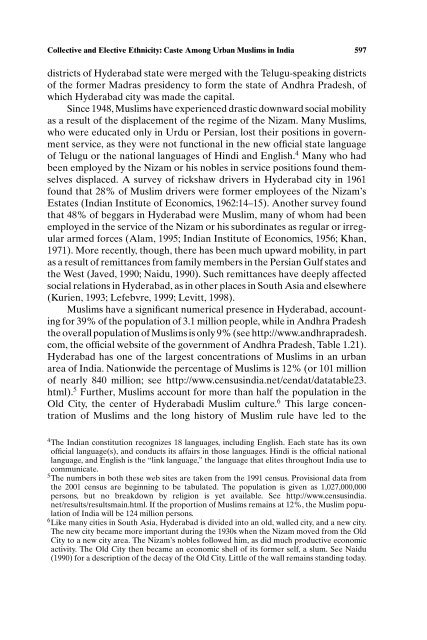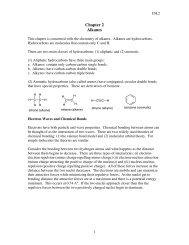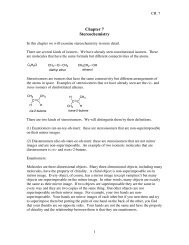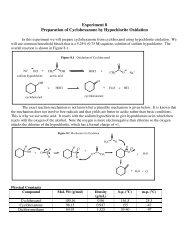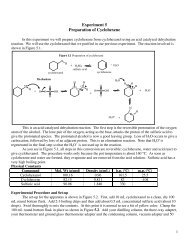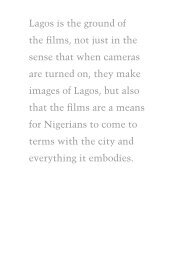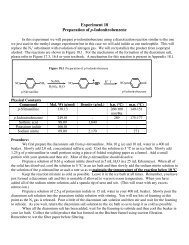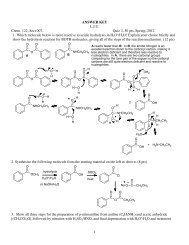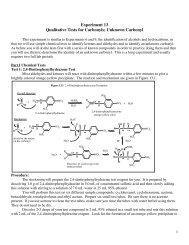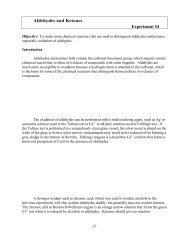Collective and Elective Ethnicity: Caste Among Urban ... - myweb
Collective and Elective Ethnicity: Caste Among Urban ... - myweb
Collective and Elective Ethnicity: Caste Among Urban ... - myweb
You also want an ePaper? Increase the reach of your titles
YUMPU automatically turns print PDFs into web optimized ePapers that Google loves.
<strong>Collective</strong> <strong>and</strong> <strong>Elective</strong> <strong>Ethnicity</strong>: <strong>Caste</strong> <strong>Among</strong> <strong>Urban</strong> Muslims in India 597districts of Hyderabad state were merged with the Telugu-speaking districtsof the former Madras presidency to form the state of Andhra Pradesh, ofwhich Hyderabad city was made the capital.Since 1948, Muslims have experienced drastic downward social mobilityas a result of the displacement of the regime of the Nizam. Many Muslims,who were educated only in Urdu or Persian, lost their positions in governmentservice, as they were not functional in the new official state languageof Telugu or the national languages of Hindi <strong>and</strong> English. 4 Many who hadbeen employed by the Nizam or his nobles in service positions found themselvesdisplaced. A survey of rickshaw drivers in Hyderabad city in 1961found that 28% of Muslim drivers were former employees of the Nizam’sEstates (Indian Institute of Economics, 1962:14–15). Another survey foundthat 48% of beggars in Hyderabad were Muslim, many of whom had beenemployed in the service of the Nizam or his subordinates as regular or irregulararmed forces (Alam, 1995; Indian Institute of Economics, 1956; Khan,1971). More recently, though, there has been much upward mobility, in partas a result of remittances from family members in the Persian Gulf states <strong>and</strong>the West (Javed, 1990; Naidu, 1990). Such remittances have deeply affectedsocial relations in Hyderabad, as in other places in South Asia <strong>and</strong> elsewhere(Kurien, 1993; Lefebvre, 1999; Levitt, 1998).Muslims have a significant numerical presence in Hyderabad, accountingfor 39% of the population of 3.1 million people, while in Andhra Pradeshthe overall population of Muslims is only 9% (see http://www.<strong>and</strong>hrapradesh.com, the official website of the government of Andhra Pradesh, Table 1.21).Hyderabad has one of the largest concentrations of Muslims in an urbanarea of India. Nationwide the percentage of Muslims is 12% (or 101 millionof nearly 840 million; see http://www.censusindia.net/cendat/datatable23.html). 5 Further, Muslims account for more than half the population in theOld City, the center of Hyderabadi Muslim culture. 6 This large concentrationof Muslims <strong>and</strong> the long history of Muslim rule have led to the4 The Indian constitution recognizes 18 languages, including English. Each state has its ownofficial language(s), <strong>and</strong> conducts its affairs in those languages. Hindi is the official nationallanguage, <strong>and</strong> English is the “link language,” the language that elites throughout India use tocommunicate.5 The numbers in both these web sites are taken from the 1991 census. Provisional data fromthe 2001 census are beginning to be tabulated. The population is given as 1,027,000,000persons, but no breakdown by religion is yet available. See http://www.censusindia.net/results/resultsmain.html. If the proportion of Muslims remains at 12%, the Muslim populationof India will be 124 million persons.6 Like many cities in South Asia, Hyderabad is divided into an old, walled city, <strong>and</strong> a new city.The new city became more important during the 1930s when the Nizam moved from the OldCity to a new city area. The Nizam’s nobles followed him, as did much productive economicactivity. The Old City then became an economic shell of its former self, a slum. See Naidu(1990) for a description of the decay of the Old City. Little of the wall remains st<strong>and</strong>ing today.


